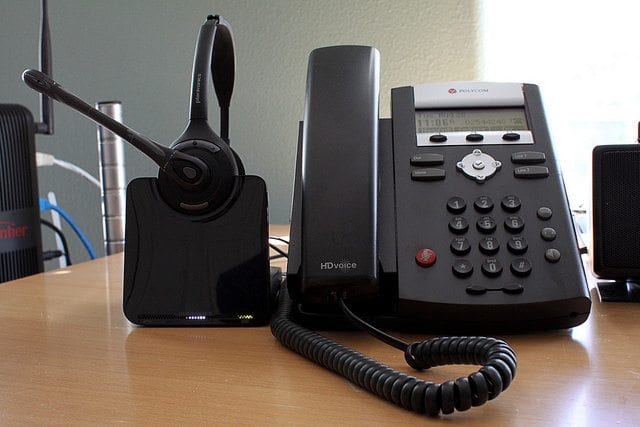Top ten things to consider when choosing between iPhone and Samsung Galaxy
With what’s fast becoming the majority of businesses having some form of remote, home-based, or mobile workforce, there’s an increasing demand for business phones capable of giving all workers access to corporate networks, communications systems, and other resources.
Mobile phones are ideal, in this regard. But then the question arises, which platform – Android or iOS – and which model of device would be most suitable for your business phones? Given their dominance in the mobile market (combined at over 90% of market share), in this article we’ll be breaking down the ten principal criteria to consider when choosing between the iPhone and the Samsung Galaxy.
1. Screen Size
If “bigger is better” for you, then Samsung Galaxy has the edge. Though the iPhone X matches up to the Galaxy S9 with its screen size of 5.8 inches, the S9 Plus has a larger 6.2-inch screen. All three of these top-of-the-range models are OLED displays, but the S9’s resolution and pixel density are slightly higher. And looking back a bit, independent testing showed that the Galaxy S8 had the highest rated display of all smartphones.
The iPhone X has the slight edge in terms of colour calibration, with its TrueTone technology automatically adjusting the colour temperature of the screen, in response to varying light conditions.
2. Battery Charging
Just as in the consumer market, battery life and ease of recharging are major factors to consider for business phones. Longer-lasting batteries mean more time in touch with the office for a mobile workforce, or employees in remote regions where power and charging conditions may not be so favourable.
Charging was notoriously difficult with some of Apple’s previous offerings (like the iPhone 7 Plus), fueling a market in slap-on battery packs, but more recent lines have sought to address this issue. In their latest incarnations, both Samsung Galaxy and iPhone feature wireless charging, and some kind of “fast charging” option.
Specialist companies such as LG Networks can offer advice and expertise in setting up your network hardware for wireless charging of business phones and other mobile devices.
3. Memory Expansion
If the members of your mobile workforce require access to extensive company or third-party databases, or have to use resource-hungry software on a daily basis, then business phones with a lot of processing power and memory are advised.
iPhones tend to have a fixed configuration, with few options for expanding or upgrading the system’s hardware capacity, beyond buying a higher-end device. That said, their standard specification is usually more than adequate for normal business applications.
With the Samsung Galaxy, you’ll start with a basic capacity (like the Galaxy S8 Plus, with its 64GB internal memory) and have the option of expanding this by slotting in a microSD storage card.
4. Durability
An important factor in choosing the hardware is having business phones which are durable enough to withstand the environmental and working conditions encountered by your mobile workforce.
Both the iPhone and Samsung Galaxy use a lot of glass in their design – Apple on the front with a metal base, with Samsung having glass on front and back. But from the Galaxy S8, this glass is Gorilla Glass 5, which is engineered to survive drops from shoulder height (1.6 metres).
5. Security
For the enterprise, a mobile workforce outfitted with approved BYOD (Bring Your Own Device) or company-bought business phones also represents a potential risk to corporate data, intellectual property, customer records, and other forms of sensitive information. Unless the devices are properly protected, all of this information may become available to hackers, industrial spies, or business rivals.
The Samsung Galaxy and iPhone both offer facial recognition mechanisms for unlocking a device. The iPhone X uses a True Depth camera on the front of the phone to map faces in 3D with infra-red dots. While the front camera on the Galaxy S9 and S9 Plus can’t sense three-dimensional depth, it uses a combination of iris scanning and its own facial recognition algorithms, called Intelligent Scan.
The Face ID technology of the iPhone X is more resistant to tampering, but Samsung’s iris scanner offers a more secure mechanism. Other security options are available on both platforms, including fingerprint scanning, pattern, PIN (Personal Identification Number), and password unlocking mechanisms.
With business phones and other related hardware, device security needs to be considered within the framework of a Mobile Device Management (MDM) programme, or similar scheme. Attention must also be given to the infrastructure and physical security of the corporate network – an area in which the specialists at LG Networks can also offer advice or assistance.
6. Integration with Other Hardware
In general, it may be said that iPhones have the advantage in hooking up with other hardware, as Apple’s ecosystem provides seamless integration between business phones and desktop computers or other devices running the macOS operating system. Examples include the Continuity feature, which uses wireless connectivity to let iPhone users switch to their MacBook to make calls, or send and receive text messages.
For the Galaxy, the Samsung DeX technology gives users the option of connecting their phone to a monitor and using it in place of a desktop computer, or laptop. With a mobile workforce, this kind of integration can be of value to employees who pop in and out of branch offices.
7. Options For eCommerce
For businesses with a dispersed or mobile workforce, giving workers access to online payment or transactions systems is now an economic necessity.
With Apple Pay, iPhones offer one of the most popular platforms for making mobile payments. And using the Messages app under iOS 11, it’s possible to send or receive money from designated friends and family.
For the Galaxy, Samsung Pay acts as a credit or debit card alternative. The platform is supported by numerous retail locations and a growing number of banks and finance houses.
8. Multimedia Experience
As in the consumer market, today’s business phones are often called upon to support multimedia applications such as video, music, and digital imaging.
At the hardware level, the Samsung Galaxy gives users the option of using a wired headset, in contrast to the iPhone which no longer provides a headphone jack, requiring people to use wireless Bluetooth accessories.
For general photography and video, both brands have considerable merits, and it’s largely a matter of preference for the user. Notably, the iPhone X offers a Portrait Lighting feature which lets you test out various lighting conditions on a shot, before and after you take it. And the Galaxy S9 and S9 Plus offer a variable lens aperture (opening), which allows you to create brighter shots in low light.
9. Price
iPhones are notoriously expensive, with the lowest-spec iPhone X (64GB storage capacity) coming in at around £999 for a new purchase. Though prices vary, the Galaxy S9 starts at around £739.
It’s advisable to shop around, and to look for special deals favouring business buyers. Remember that the option to buy second-hand, older, or reconditioned models may be entirely acceptable for business phones, and this can work out considerably cheaper. It’s also worth exploring the price ranges in other parts of the globe – an option if your mobile workforce takes in members from various countries.
Providers and supply chain partners of VoIP (Voice over Internet Protocol) telephony systems like LG Networks, will usually keep a database of compatible and available hardware, including the latest business phones from Apple and Samsung.
10. Technical Support
With the various forms of Android and its compatible hardware creating a somewhat “hit or miss” landscape in terms of system updates and compatible software, iPhone has the advantage over Samsung Galaxy, when it comes to operating system support. This is largely due to the consistency of the iOS ecosystem, which extends to the rapid and global release of upgrades and patches.
Mobile apps also tend to début on the iOS platform earlier – although the diversity of Android gives Galaxy users a much wider choice of software, and a much bigger range of customisation options.
When it comes to troubleshooting, iPhones have the edge, in that Apple maintains a number of help lines and other resources on its central website. Android users often need to consult third-party web forums, their network carrier, or device manufacturers for specific help.
Ultimately though, your choice between iPhone or Samsung Galaxy may be determined by your previous history with both companies – either in terms of which system has been used in the past, for your business phones, or what resources are most appropriate for the members of your mobile workforce.
If you have a mobile workforce, and would like more advice on choosing brands or getting the most from your business phones, get in touch with the experts at LG Networks.





